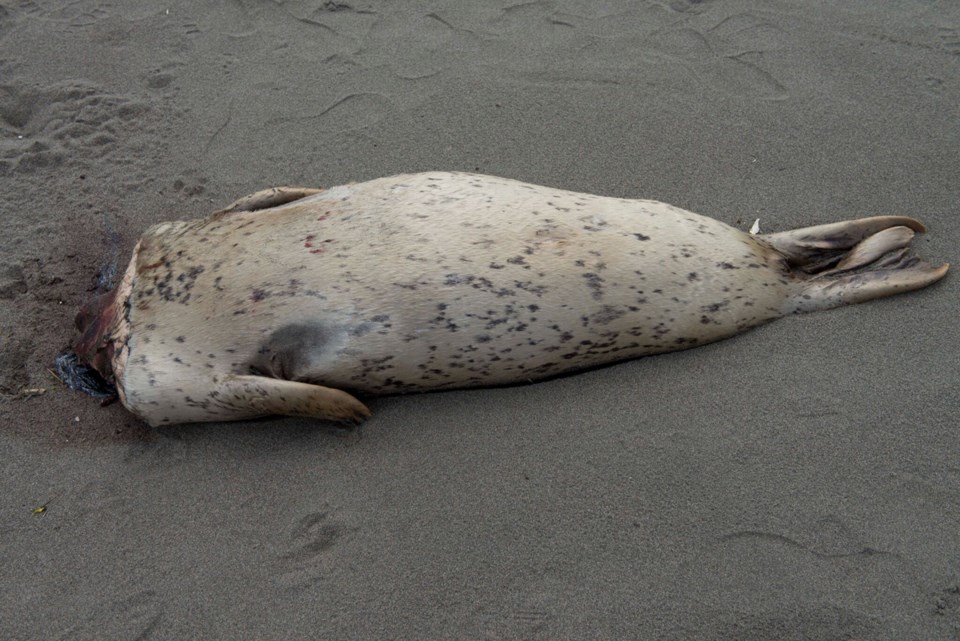A gruesome and apparently mysterious find of a headless seal on Garry Point Park beach may not, in fact, be so inexplicable.
Steveston resident David Stuart was walking his dog along the beach around noon Saturday, Sept. 3 when he came across the decapitated mammal, which appeared to be above the tide line.
Stuart, a private investigator by trade, was very suspicious of the discovery, given that the seal’s body didn’t have any bite marks and that the incision on the carcass was extremely clean, “almost laser precision.”
His concern was grave enough for him to alert the regional office of the federal government’s Department of Fisheries and Oceans (DFO), where he sent dozens of pictures and a 50-minute video of the find.
“These cuts were surgical,” said Stuart, who said he’s been studying unexplained animal deaths for many years and, as a private investigator, he kind of “goes after these things.”
“The seal’s rectum has been removed and cauterized; it makes no sense.
“This was a crime scene as far as I was concerned; this needed to be looked at.”
Paul Cottrell, the DFO’s regional marine mammal coordinator, confirmed the department has been investigating the matter and that the DFO’s marine mammal pathologist has examined Stuart’s pictures and video.
“(The pathologist) has seen something like this previously and it seems the seal was likely hit by a huge propeller; something with a large, sharp edge,” said Cottrell, who was dealing with a tangled up humpback whale on the Central Coast when he spoke to the Richmond News on Monday.
“The wounds on the seal were so fresh that rigor mortis hadn’t even set in. The wounds were consistent with that of a large propeller.”
As for the apparent wounds in the rectum area, Cottrell said the pathologist wasn’t as certain about that aspect, but noted that, when trauma such as an instant death occurs, it “maybe caused a lot of pressure in the bowel area.”
“We are not treating (the death) as suspicious; the death appears to have been instantaneous. Whatever happened to the seal was the cause of death.
“We get a number of these types of deaths every year in the area. The investigation is closed in terms of the cause of death.”
The one factor that Stuart said hasn’t been explained is what seems to be large prints or indentations left in the sand around the seal’s carcass.
“There are no bears or cougars down this way, so I’ve no idea what could have made these prints in the sand,” said Stuart.
“I really don’t want to speculate; I do have my theories, but they’re right out there, so…”
The News decided not to publish any of Stuart’s pictures in the newspaper, but some of them, along with his video, can be seen online at Richmond-News.com



